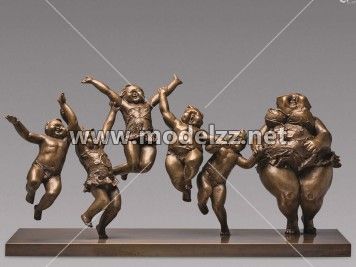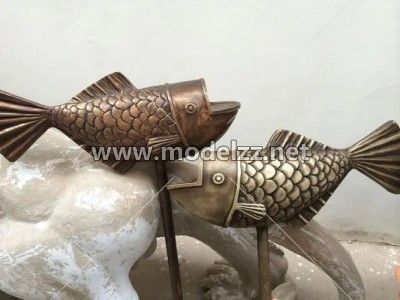Bronze was first used to cast practical objects such as cannons and mortars, but in the 15th century, it was increasingly used to cast statues and sculptures. Bronze is an alloy of copper and tin (in contrast to brass, which is an alloy of copper and zinc). A small amount of other elements can also be added in order to increase the fluidity of the liquid. The typical modern bronze is 88% copper and 12% tin.

The bronze statue is made by the lost wax method of casting. The molten metal is poured into the mold and solidified to form the statue. Bronze is a durable material, so the surface of bronze statues can be painted, silvered, or gilded in various ways. So far, the lost wax method has been used to cast bronze statues. The lost wax casting method may be the oldest and most primitive form of casting, but it is still the most widely used today. It is universally favored by artists because of the fineness of detail that can be achieved through the use of wax and molds. Usually casting a bronze statue must involve making a 1:1 clay mold model, then making a wax mold from a clay mold, then casting the bronze from the wax mold, and finally finishing and painting the surface of the statue. For large statues, it is usually necessary to make the statue in different parts and finally weld them together.

For thousands of years, bronze has been an ideal sculptural medium for artists. Because of its versatility, rich colors, and rich details, it is favored by many artists. At the same time, bronze sculpture covers a range of art from small statues to large monuments and modern abstract artwork. As a result, bronze statues have become one of the most popular sculptural works of art, no less than marble statues.

